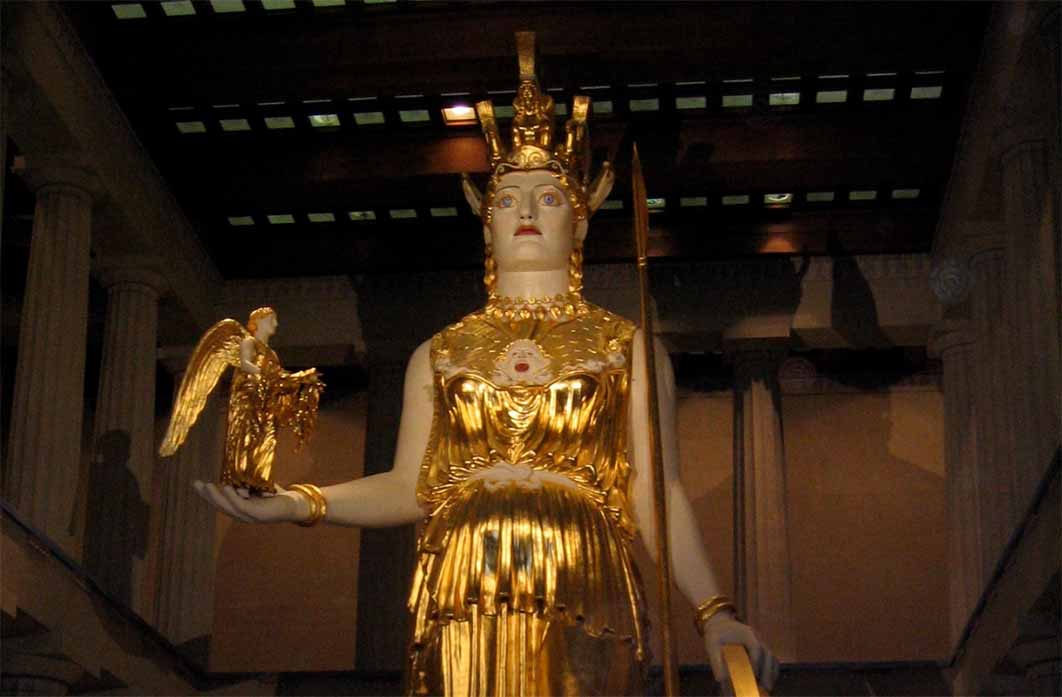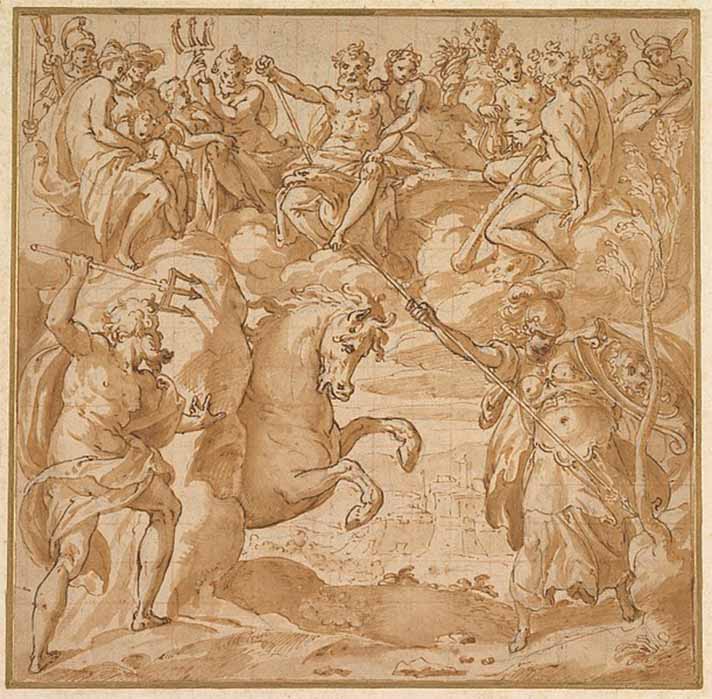
Athena Parthenos: Tales of Artistry, Myth and Athenian Glory
The city of Acte had not formally been bestowed with divine protection. However, its king, Cecrops, ushered a golden period so remarkable that the city was then renamed Cecropia and the gods acknowledged its splendor. Two of the gods that expressed their interest in the city were Athena, the goddess of war and wisdom, and Poseidon, the god of the ocean. They plan to glorify the city, rename it after themselves, and put the city under their protection.
Concerned that two of the most powerful gods in Olympus would destroy the world over their disagreement, Zeus decided to step in. He suggested Athena and Poseidon compete for Cecropia. Thus, at the time agreed, Athena and Poseidon faced each other on the Acropolis' hallowed hill. Zeus, the Olympian gods, and the Cecropians assembled to watch the battle.
Poseidon made the first move by striking the ground with his trident in one quick motion. As the ground trembled, an underwater sea formed as Poseidon’s gift to the people. However, as their city is located near the sea with an abundance of water at its disposal already, seawater was of little use to the Cecropians, and Poseidon's gift was thus received with little excitement. Athena then touched the earth with her foot. In a matter of moments, her gift for the Cecropians, a completely grown olive tree, sprung from the ground. The fruit of the tree was nutritious and could be used to manufacture olive oil, which had several uses, while the tree itself provided high-quality lumber.

The Contest Between Athena and Poseidon for the Possession of Athens, drawing, Cesare Nebbia. (CC0)
As Athena's offering was superior, Cecrops declared her the victor of the competition, and the city of Cecropia was then named after her. The city of Cecropia became known as the city of Athens, and the hill of the Acropolis in which Athena was battling Poseidon was turned into a hallowed area for Athena’s worship.
Worshipping Athena in Athens
Towards the side of the Acropolis, in the eastern half of the temple that is now the Erechtheion (or Temple of Athena Polias), was the primary focus of Athena worship. There stood a statue of Athena made of olive wood. Like a doll, the statue was clothed and undressed. This was done at the feast of Plynteria. The festival's name is derived from the Greek verb πλύvειν (plynein, which means "to wash").
The festival of Plynteria was held in Athens during the ἀπoφράδες (apophrades, defined by Harold Bloom as the “return of the dead”). The Apophrades were days when the deceased were believed to return to their homes. These were unclean days when temples were closed and no business was done. During the festival, the Athena temple was enclosed by a rope, preventing anyone from entering it. Her statue's clothing and jewelry were removed so that they could be ritually cleansed, and the nude statue was covered to keep it out of sight of humans. During the festival of Panathenaia, the first month of the Attic calendar, the statue was given a new woven robe called the peplos and, as a tribute, calves were killed inside the temple.
The Solonian tradition of Athena’s story emphasizes her unique bond with Zeus while also defending her city. A larger Athena temple than any previously seen on the Acropolis started to be built in the decade 490–80 BC as a tangible testament to this notion. Possibly the earliest independent temple erected in worship of the "Solonian" Athena, it stood where the Parthenon now stands. However, this temple did not survive the arrival of the Persians in 480. A non-Athenian record about Athena dating back to 480 BC tells us of the Delphic Oracle which states that Athena is Athens' unique champion and is accepted by the gods. However, there was another rejected portion of this oracle in which Apollo sarcastically remarks, "Athena does not have quite the influence with Zeus that you Athenians suppose."
The renowned Athenian sculptor Pheidias, who is also renowned for creating the Statue of Zeus at Olympia, sculpted the chryselephantine sculpture of the goddess Athena called Athena Parthenon between 447 and 438 BC. The exterior of Athena’s shield represented the mythical Amazonomachia, a conflict between the Athenians and the Amazons, a tribe of female warriors who lived in the steppes to the north of the Black Sea. A spear was leaning against the goddess's left arm. Between her left foot and her shield lay a serpent, symbolizing the legendary Athenian king Erichthonios, whom Athena had adopted. It appears likely that Athena's right hand was unsupported in Pheidias' original sculpture. The image of the statue on Athenian coins, which we would expect to be the most realistic, does not display it with any support structure under the goddess's arm, despite replicas of the sculpture showing it with some sort of column or support under her right arm. The statue's core was composed of wood while the goddess's skin was composed of ivory. The statue also had detachable gold plates covering her clothing, breastplate, helmet, and shield. It was among the most well-known sculptures created by Greek artists. As a result, we have multiple textual accounts of it that have survived, as well as images of it on coins and other later replicas.





